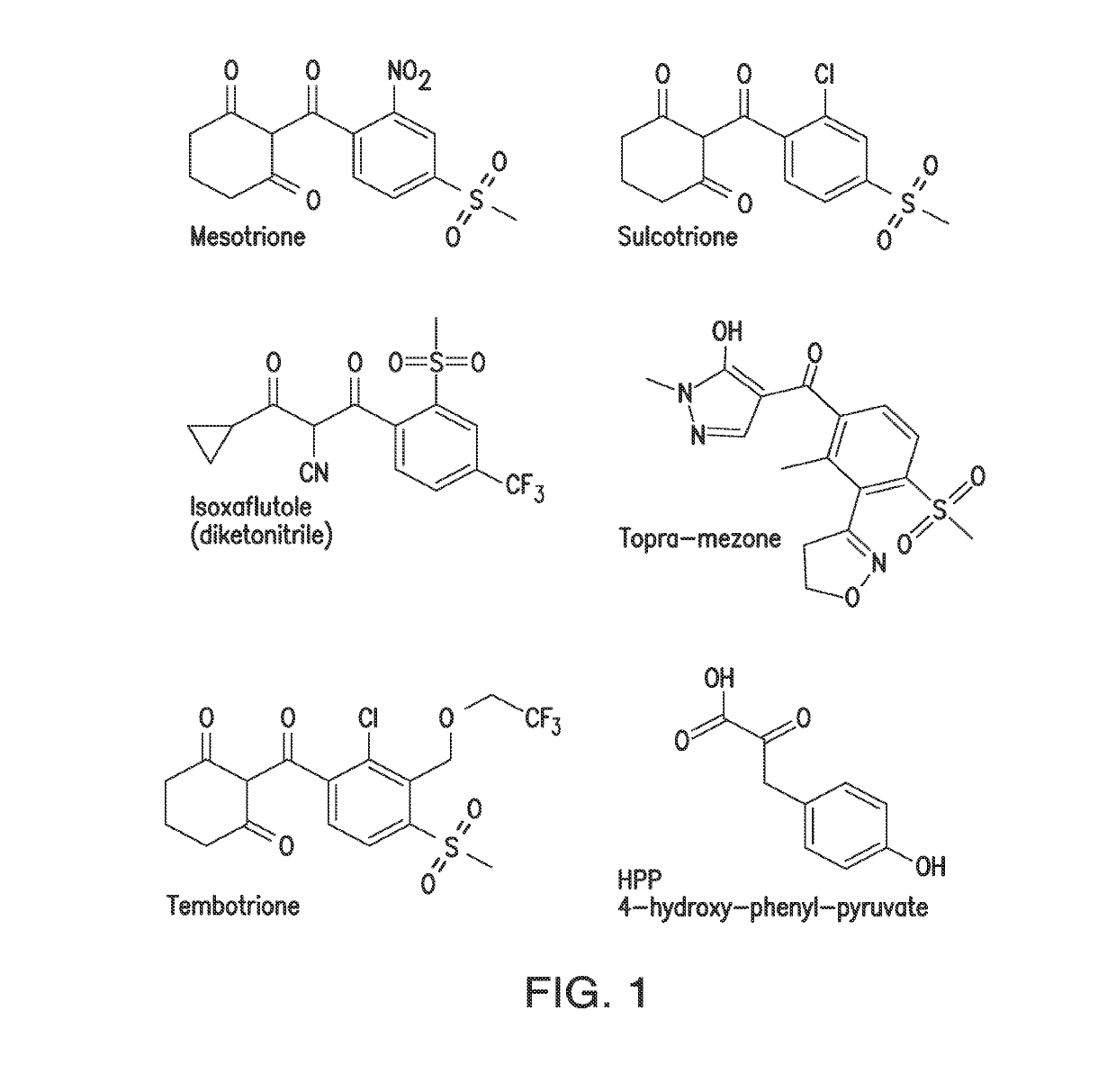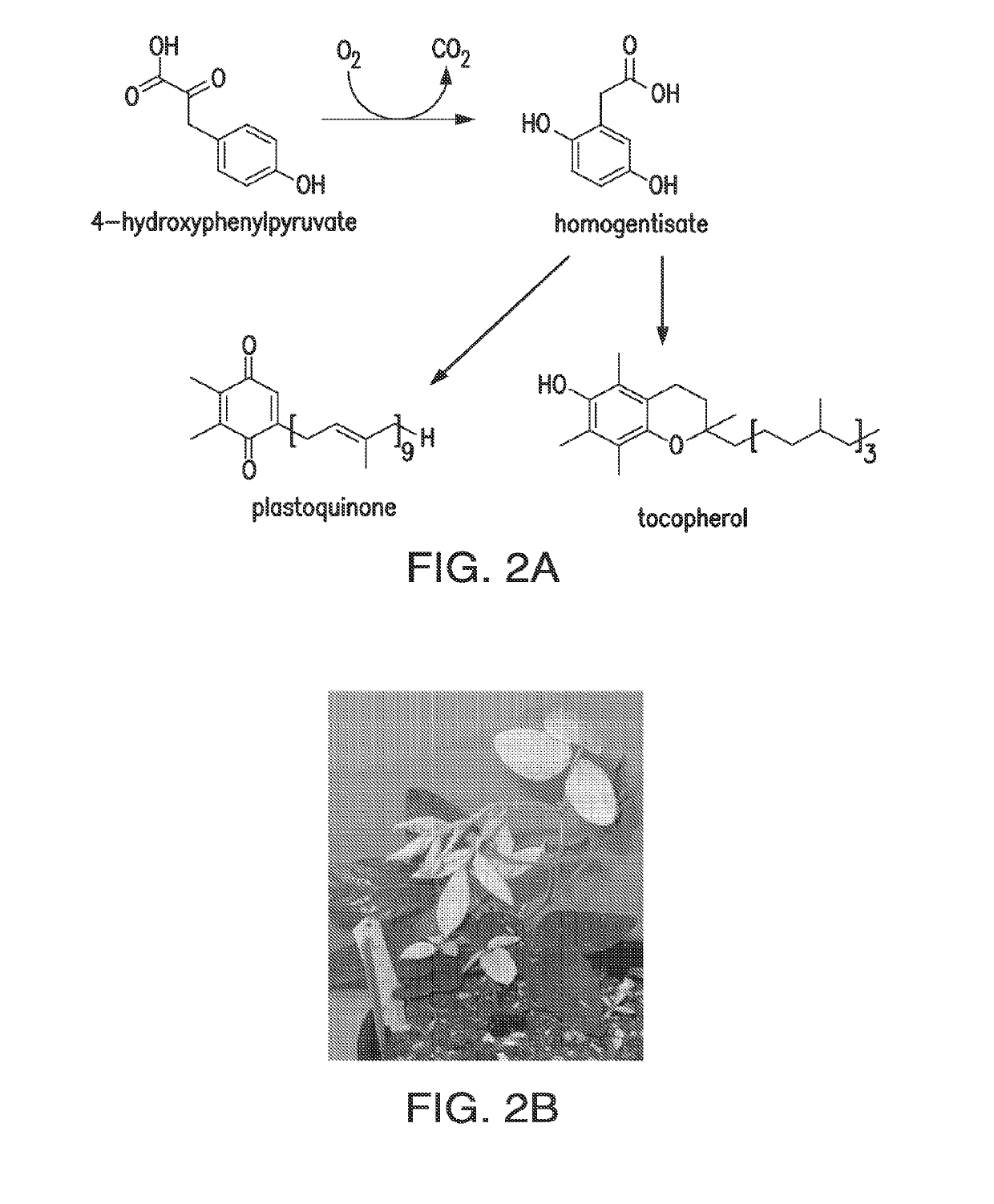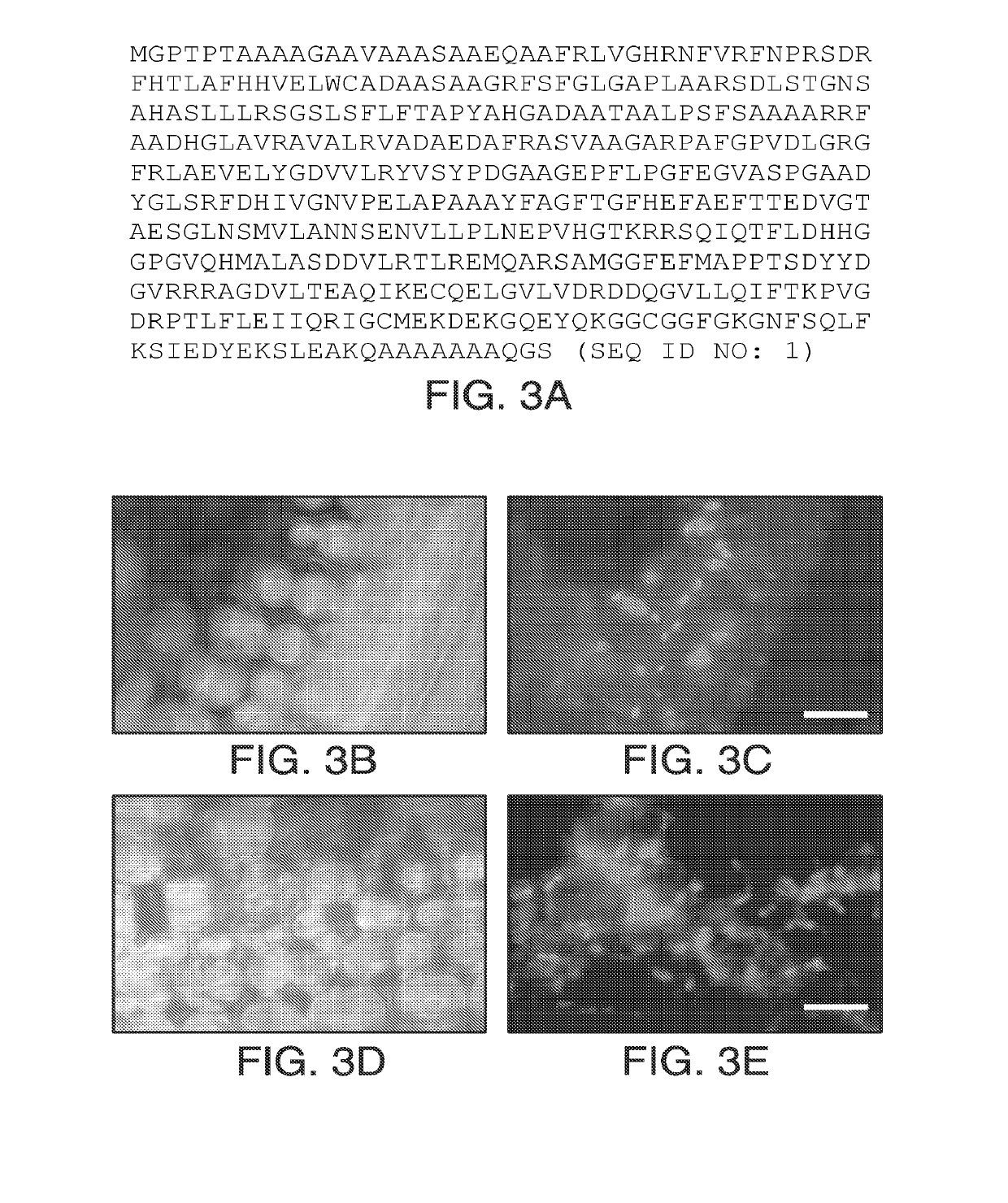Compositions and methods comprising sequences having hydroxyphenylpyruvate dioxygenase (HPPD) activity
a technology of hydroxyphenylpyruvate and dioxygenase, which is applied in the direction of oxidoreductase, biochemistry apparatus and processes, enzymes, etc., can solve the problems of bleaching, death, and inability to promote the development of novel herbicide chemistries
- Summary
- Abstract
- Description
- Claims
- Application Information
AI Technical Summary
Benefits of technology
Problems solved by technology
Method used
Image
Examples
example 1
tal Methods
Immuno-Localization Electron Microscopy
[0644]Briefly, native or heterologously expressed HPPD was tagged with affinity purified rabbit anti-HPPD antibodies, which were labeled with goat anti-rabbit F(ab′) conjugated with μtltrasmall gold particles (Aurion, The Netherlands). Gold labeling was followed by silver enhancement (Aurion). Sections were counterstained with 4% uranyl acetate (aqueous) followed by Reynold's lead citrate and examined by electron microscopy.
Genomic and Transcript Analysis
[0645]A synthetic maize wild-type HPPD cDNA (NCBI Reference Sequence: NM_001112312.1) was assembled from commercially synthesized oligonucleotides. During the synthesis of the gene, an NcoI restriction site was engineered into the start of the sequence to facilitate cloning. The change of codons (C)ATG CCC to (C)ATG GGT resulted in the substitution of glycine for proline at position 2. An EST (sgc5c.pk001.j9) coding for soybean HPPD was identified from a DuPont-Pioneer proprietary G....
example 4
Evolution of the Maize HPPD Protein for Increased Insensitivity to Herbicide Inhibitors
[0688]Directed evolution is an iterative process whereby beneficial diversity is discovered and iteratively recombined to evolve variants that achieve a desired protein engineering goal. A goal was to create an HPPD enzyme that retained kinetic activity yet was insensitive to most or all HPPD-inhibiting herbicides. Characterization of the maize and soybean HPPD proteins showed that the former was 40-fold less sensitive to mesotrione than the latter (see Table 2 below, which shows kinetic parameters of E. coli purified proteins of wild-type HPPD enzymes from maize and soybean). Inhibition measurements are for the herbicidal compound mesotrione. The maize enzyme was, therefore, chosen for use in soybean plants. Final evaluation of shuffled HPPD enzymes was carried out with multiple HPPD herbicides to select the most robust variant.
[0689]
TABLE 2Insensitivity parametersFitnessSEQKinetic parametersONOF...
example 5
ession Analysis in Soybean Plants
[0696]To mimic the pattern of expression with regard to growth stage, tissue and subcellular location, and uncharacterized signaling cues, the transgene promoters were based on the native soybean HPPD promoter. Attempts to directly isolate or measure native HPPD protein accumulation indicated low abundance in leaves. This was confirmed by EST analysis. Profiles of transcript abundance in multiple tissues from soybean (SoyBase.org) were compared to other well-known herbicide target genes, EPSPS (glyphosate target) and ALS (ALS-inhibitor target) (FIG. 7). HPPD and EPSPS appear to be expressed at a low level in all tissues other than flowers compared to the well-characterized ACT2 / 7 gene (Hu et al., 2009). Preserving the native expression pattern for HPPD while substituting the improved insensitive maize HPPD variant genes can confer robust herbicide tolerance with only moderate overexpression of the transgene.
PUM
| Property | Measurement | Unit |
|---|---|---|
| resistance | aaaaa | aaaaa |
Abstract
Description
Claims
Application Information
 Login to View More
Login to View More - R&D Engineer
- R&D Manager
- IP Professional
- Industry Leading Data Capabilities
- Powerful AI technology
- Patent DNA Extraction
Browse by: Latest US Patents, China's latest patents, Technical Efficacy Thesaurus, Application Domain, Technology Topic, Popular Technical Reports.
© 2024 PatSnap. All rights reserved.Legal|Privacy policy|Modern Slavery Act Transparency Statement|Sitemap|About US| Contact US: help@patsnap.com










